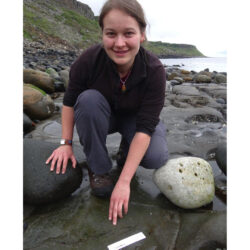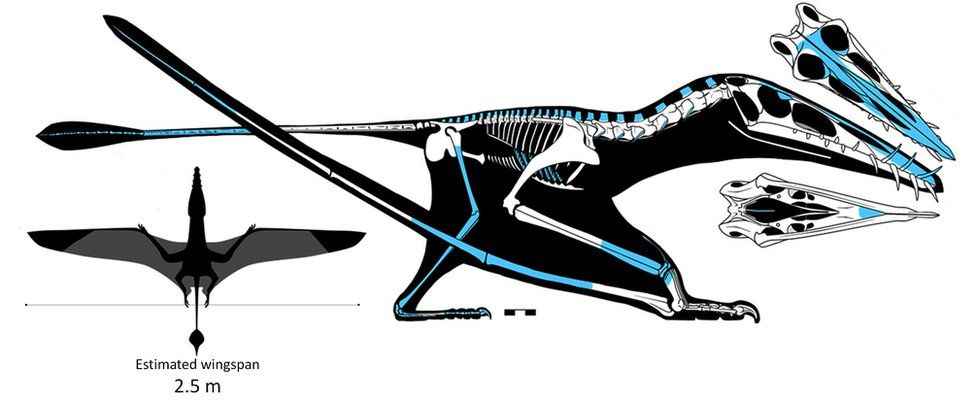New dinosaur species - the world's largest Jurassic pterosaur
PhD student Amelia Penny discovered a new dinosaur species which is also the world's largest Jurassic pterosaur - a 170-million-year-old winged reptile - protruding from the rocks of the Isle of Skye.

PhD student Amelia Penny points to the fossil she discovered.
Originally discovered in 2017 , further examination led by PhD student Natalia Jagielska revealed the creature was a new dinosaur species! They have given it the Gaelic name Dearc sgiathanach (pronounced Jark Ski-an-Ach), in honour of the Isle of Skye. "Dearc is a fantastic example of why palaeontology will never cease to be astounding," Ms Jagielska said. "Pterosaur fossils as complete as this are very rare." Flying animals have really light bones, which can make them very difficult to preserve as fossils as they are so fragile.

Diagram of the pterosaur skeleton, highlighting a 2.5m (8ft) wingspan.
Prof Steve Brusatte, of the University of Edinburgh, who was leading the Isle of Skye field trip, called it "a superlative Scottish fossil".
"The preservation is amazing, far beyond any pterosaur ever found in Scotland and probably the best British skeleton found since the days of [fossil hunter] Mary Anning in the early 1800s," he said.
And its size "tells us that pterosaurs got larger much earlier than we thought, long before the Cretaceous period when they were competing with birds, and that's hugely significant".
This dinosaur discovery is is one of 4 we are featuring, as we explore Dinosaurs in OKIDO magazine. Read more about Baby Yingliang the dinosaur embryo, the crocodile who ate a dinosaur for its last meal and Dolly the diplodocid who caught a nasty cough.
Fun Fact
Researchers from the Hunterian Museum, in Glasgow, and the Staffin Museum, on Skye, cut out the rock slab featuring the fossil. This is a painstaking process and they had to race the incoming tide - But it was well worth the effort. Read more about Dearc here.

Prof Steve Brusatte extracting the rock slab.